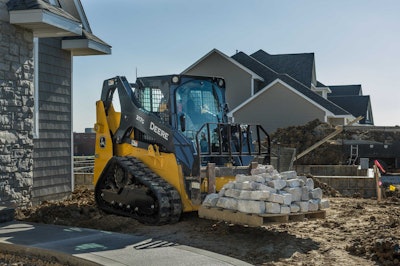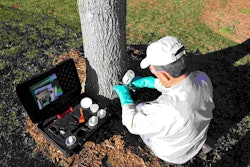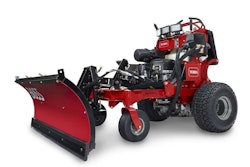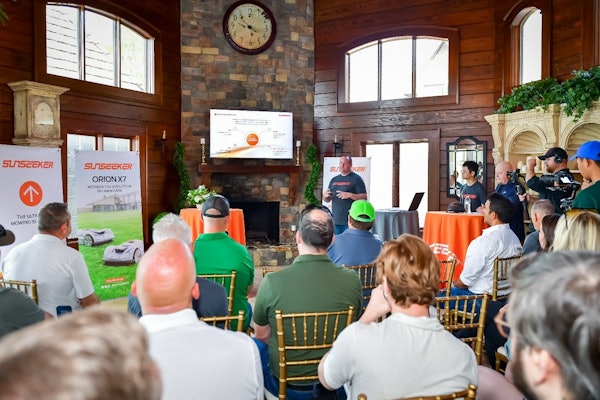 Construction and landscaping crews both use compact equipment from John Deere. Landscaping held up relatively well in Deere’s latest financial report. Construction? Not so much.
Construction and landscaping crews both use compact equipment from John Deere. Landscaping held up relatively well in Deere’s latest financial report. Construction? Not so much.Photo: John Deere
As with Toro’s fiscal year, John Deere and Co.’s first quarter is November through January, but unlike Toro’s outstanding performance, the much larger and more diverse John Deere, along with many of its competitors (Caterpillar especially comes to mind), is facing a variety of headwinds.
One of the stiffest of them is agricultural equipment, followed by a tough outlook for construction.
Unfortunately, in reporting its financial results, Deere includes turf in the agriculture segment. To the extent John Deere’s results speak to the “turf” side of the business, both landscaping’s first-quarter performance and its contribution to the 2016 outlook are neutral – flat essentially – in an otherwise tough cycle for the company.
Of course, a substantial share of Deere’s compact equipment is used by both construction companies and the many landscaping contractors that handle commercial and large residential projects. While describing turf as flat, Deere & Co. made no bones about the difficult construction market, albeit a challenge eclipsed by agricultural equipment.
Overall, net income fell 34 percent in the first quarter to $254 million vs. $387 million in the same period last year. Net sales and revenue were down 13 percent to $5.42 billion compared with $6.38 billion in the first quarter of Deere’s fiscal 2015.
 As with all G-Series models, this 316Gr radial-lift machine features a swing-out cab door, additional foot and legroom, and footwell cleanout.
As with all G-Series models, this 316Gr radial-lift machine features a swing-out cab door, additional foot and legroom, and footwell cleanout.Photo: John Deere
In a conference call with securities analysts, Deere & Co. executives were candid about the difficulty of a cycle showing little promise for significant demand growth in agriculture – where low commodity prices are expected to dampen growers’ openness to capital investment – or heavy construction equipment.
Deere management said the effects of oil prices on the broader economy, as well as general concerns about economic performance worldwide, account for their expectation that the construction market – again, like agriculture – is likely to be difficult through much of 2016.
And while neither foreign-exchange rates nor foreign markets’ sales have been kind, Deere’s senior executives were careful to state flatly that both the United States and Canada represent tough markets of their own.
Losses or no, Deere & Co. remained profitable in all its businesses. The company’s cost-control efforts have been under way for some time and will continue given the 46-percent decline in operating profit in the first quarter.
On the call with analysts, Deere management noted that its strong financial position doesn’t preclude further cost-costing measures in the future.
In answer to a question, a company executive noted that John Deere does have a sizable R&D budget that could be trimmed somewhat if necessary, but he was quick to add that Deere believes continuing innovation is key to its long-term success.









